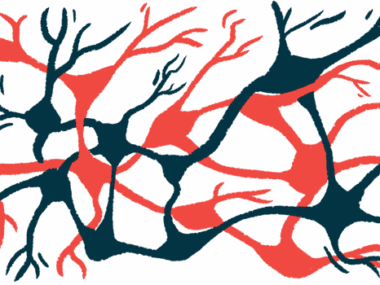Rett patients see disease progression despite therapy: Study
Girls and women face ‘considerable burden’ across subtype, age
Written by |

Women and girls with Rett syndrome experience disease progression and increasing disease burden even as they rely on supportive therapies, a study found.
Close to half of all patients in the study needed a hospital or emergency room visit, the researchers said. Children and adolescents saw “increasing disease severity and motor-behavioral dysfunction,” which underscores “the unmet needs of this population and the value of early intervention to manage [Rett] in the long-term,” they wrote.
The study, “Characterizing the journey of Rett syndrome among females in the United States: a real-world evidence study using the Rett syndrome natural history study database,” was published in the Journal of Developmental Disorders.
Rett syndrome is a neurological disorder characterized by normal early development followed by stagnation and regression of motor and communication skills that usually start between the ages of 6 and 18 months. It almost exclusively affects girls. Symptoms such as learning difficulties, seizures, and repetitive hand movements, are frequent.
Almost all cases of Rett are caused by mutations in the MECP2 gene that impair the function of the MeCP2 protein, which plays an important role in brain development and function. Mutations in other genes have been linked to atypical forms of the disease when patients’ symptoms do not meet all of Rett’s diagnostic criteria.
Study assesses 455 patients
To characterize Rett’s course in U.S. females, researchers analyzed data from the 5211 RTT Natural History Study, an observational study in the U.S. from November 2015 to July 2021 that assessed clinical features, supportive therapy, medication, and other parameters in Rett patients.
A total of 455 Rett patients were included in the analysis, 98.2% of them with an MECP2 mutation. Some 90.5% had classic Rett, 79.8% were children or adolescents at the time of their first visit, and their mean age was 7.9. Adult patients, who made up 20.2% of the group, had a mean age of 27.1.
The most common symptoms included loss of speech (95.8%), repetitive hand movements (92.3%), respiratory problems (75.8%), and sleep disturbances (75.6%). These symptoms were more frequent in patients with classical Rett, although the ability to sit, stand, or walk independently were not different between disease types.
Constipation was more frequent in adults than in pediatric patients (83.7% vs. 72.2%), as were scoliosis, or sideways curvature of the spine (73.9% vs. 43.5%), and seizures (56.5% vs. 43.5%).
The most commonly used medications, particularly for children and adolescents, were prokinetic therapies (used by 39.8%), which enhance gut movements, and drugs to help control seizures (32.3%). Children and adolescents were also more likely to use nutritional supplements and medications to sleep.
Children and adolescents were also more likely to use supportive therapies, particularly physical (87.3%), speech-language (86.8%), and occupational therapies (82.1%), than adults, whose reliance on these therapies ranged from 23.9% for speech-language therapy to 40.2% for physical therapy. There were no differences in the usage of medications and supportive therapies between people with classic and atypical Rett.
Hospital visits
Over a median four-year follow-up, almost half of the patients had a hospital or emergency room visit. That was particularly true for those with classic Rett (47.1%, vs. 20.9% for atypical Rett patients) and pediatric patients (48.5% vs. 29.3% of adults).
Disease severity was assessed using the Clinical Severity Scale (CSS) and the Motor Behavioral Assessment (MBA) scale, evaluated up to year 2 of follow-up. Both scales are completed by clinicians, and higher scores indicate more severe disease.
Patients with classic Rett had significantly more severe disease than those with atypical disease. CSS scores ranged from 22.5 to 23.8 in classic Rett patients and from 16.8 to 17.2 in atypical Rett. A similar pattern was seen for MBA scores.
Progressive worsening of disease severity was seen in pediatric patients, with a mean 0.24 increase per year in the CSS score and 1.12 increase per year in the MBA scale. MBA scores also tended to worsen in individuals with classic Rett, who had a mean 0.97 increase per year, and in the overall group of participants, with a mean change of 0.92 annually.
“To our knowledge, this study was the first to assess changes in [Rett]severity over time and provide novel insights on the short-term trends of this disease in classic and atypical [Rett] as well as in pediatric and adult individuals,” the researchers wrote. “Moreover, the results are likely to be generalizable to the broader [Rett] population.”
They noted that future studies need to address the impact of Daybue (trofinetide), approved in the U.S. last year, on how patients manage their disease.







